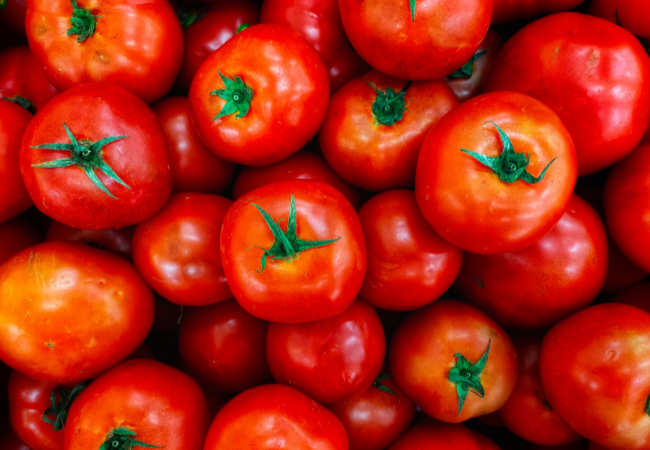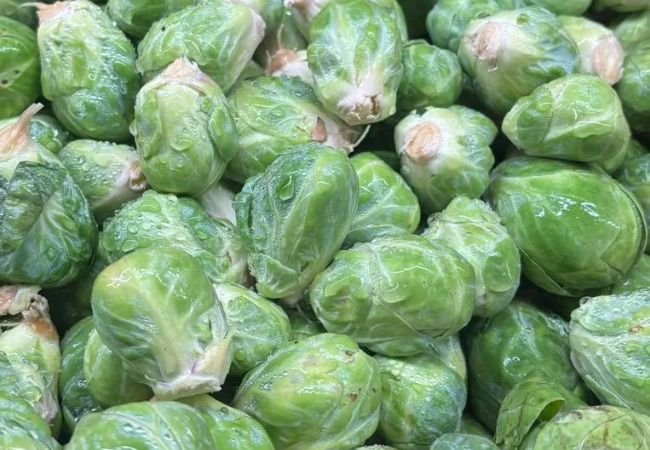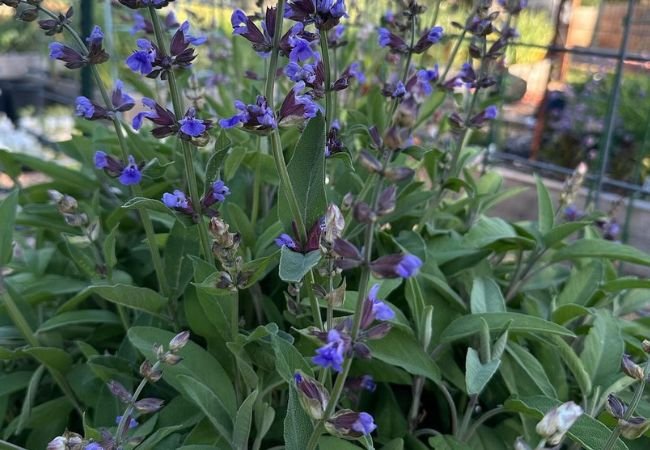How to Grow Luffa in Your Garden: A Complete Guide
Learn how to grow luffa in your garden with our complete guide. Discover step-by-step instructions, expert tips and essential care techniques for a successful harvest.
Growing luffa in your garden can be a fun and rewarding experience. These unique plants not only provide you with natural sponges but also offer beautiful flowers and edible young fruits. In this complete guide, we’ll walk you through everything you need to know about growing luffa, from planting to harvesting.
Here’s an overview of the luffa fruit:
| Attribute | Details |
|---|---|
| Botanical Name | Luffa aegyptiaca, Luffa acutangula |
| Common Name | Luffa, Loofah, Sponge Gourd |
| Plant Family | Cucurbitaceae |
| Hardiness Zone | Annual in USDA zones 5-11, perennial in tropical climates |
| Sun Exposure | Full sun |
| Soil Type | Well-drained, fertile |
| Watering | Moderate |
| Growth Habit | Annual vine |
| Height/Spread | Vines can reach 20-30 feet in length |
| Special Features | Edible when young, develops into fibrous sponge, used for culinary, medicinal and cosmetic purposes |
What is Luffa?

Luffa, also known as loofah or sponge gourd is a plant that belongs to the cucumber family. It’s grown for its fibrous fruit, which can be used as a natural sponge when dried. The two main types of luffa are:
- Luffa aegyptiaca (smooth luffa)
- Luffa acutangula (angled luffa)
Both types are easy to grow and have similar care requirements. Luffa plants are vining plants that can reach lengths of 15 to 30 feet, so they need plenty of space to grow.
Why Grow Luffa?
There are several reasons to grow luffa in your garden:
- Natural sponges: The dried fruit makes excellent biodegradable sponges for cleaning and exfoliating.
- Edible young fruits: When harvested young, luffa fruits are edible and can be used in various dishes.
- Attractive flowers: Luffa plants produce beautiful yellow flowers that can add visual interest to your garden.
- Low maintenance: Once established, luffa plants are relatively easy to care for.
Getting Started: Planting Luffa
To start growing luffa, you’ll need to consider the following factors:
Climate and Growing Season
Luffa plants thrive in warm climates with long growing seasons. They need at least 150 to 200 frost-free days to produce mature fruits. If you live in a cooler climate, you can still grow luffa by starting seeds indoors and using season-extending techniques.
Soil Preparation
Luffa plants prefer well-draining, fertile soil rich in organic matter. Before planting, prepare your soil by:
- Testing the soil pH: Luffa grows best in slightly acidic to neutral soil with a pH between 6.0 and 7.0.
- Adding compost: Mix in 2-3 inches of compost to improve soil structure and fertility.
- Loosening the soil: Use a garden fork or tiller to loosen the soil to a depth of 12-18 inches.
Choosing a Planting Location
Select a spot in your garden that receives full sun (at least 6-8 hours of direct sunlight daily). Luffa plants need plenty of space to grow, so plan accordingly. You can grow them:
- Along a fence or trellis
- On an arbor or pergola
- In raised beds with sturdy supports
Starting Seeds
You can start luffa seeds indoors 4-6 weeks before the last frost date or direct sow them outdoors after all danger of frost has passed. Here’s how to start your seeds:
Indoor seed starting
- Use biodegradable pots filled with seed-starting mix.
- Plant seeds 1 inch deep and keep the soil moist.
- Maintain a temperature of 70-80°F (21-27°C) for germination.
- Once seedlings emerge, provide plenty of light.
Outdoor direct sowing
- Wait until soil temperature reaches at least 70°F (21°C).
- Plant seeds 1 inch deep and 6 inches apart.
- Thin seedlings to 12-18 inches apart once they have a few true leaves.
Transplanting Seedlings
If you started your seeds indoors, transplant them outdoors when:
- All danger of frost has passed
- Seedlings have 3-4 true leaves
- Nighttime temperatures consistently stay above 50°F (10°C)
Harden off your seedlings by gradually exposing them to outdoor conditions over 7-10 days before transplanting.
Caring for Your Luffa Plants
Once your luffa plants are established, they require regular care to thrive and produce a good harvest. Here are the key aspects of luffa plant care:
Watering
Luffa plants need consistent moisture, especially during fruit development. Follow these watering tips:
- Water deeply: Provide 1-2 inches of water per week.
- Use mulch: Apply a 2-3 inch layer of organic mulch around plants to retain moisture and suppress weeds.
- Avoid overhead watering: Water at the base of the plant to prevent fungal diseases.
Fertilizing
Luffa plants are heavy feeders and benefit from regular fertilization. Here’s a fertilization schedule:
- At planting: Mix in a balanced, slow-release fertilizer.
- Monthly: Apply a balanced liquid fertilizer diluted to half strength.
- When fruits appear: Switch to a fertilizer higher in phosphorus and potassium to support fruit development.
Training and Support
As vining plants, luffas need sturdy support to grow properly. You can:
- Install trellises: Set up trellises or other vertical supports before planting.
- Train vines: Gently guide young vines onto supports as they grow.
- Prune if necessary: Remove excess side shoots to promote better air circulation.
Pest and Disease Management
While luffa plants are generally resistant to pests and diseases, they can still face some challenges. Here are some common issues and how to address them:
Pests
- Cucumber beetles: Use row covers or handpick beetles.
- Aphids: Spray with a strong stream of water or use insecticidal soap.
- Squash bugs: Remove egg masses and use organic insecticides if necessary.
Diseases
- Powdery mildew: Improve air circulation and use fungicidal sprays if needed.
- Bacterial wilt: Remove infected plants and control cucumber beetles (which spread the disease).
- Fusarium wilt: Plant resistant varieties and practice crop rotation.
Pollination
Luffa plants produce separate male and female flowers on the same plant. While they can self-pollinate, you can increase fruit set by:
- Attracting pollinators: Plant flowers that attract bees and other pollinators.
- Hand-pollinating: Use a small brush to transfer pollen from male to female flowers.
Harvesting Your Luffa
The harvesting process depends on how you plan to use your luffa:
For edible fruits
- Harvest when fruits are young and tender, usually 4-6 inches long.
- Cut fruits from the vine with clean, sharp pruners.
- Use within a few days for best flavor and texture.
For sponges
- Allow fruits to mature fully on the vine until the skin turns brown and dry.
- Harvest before frost if growing in cooler climates.
- Peel off the outer skin and remove seeds.
- Rinse the fibrous interior and allow it to dry completely.
Processing Luffa Sponges
To prepare your harvested luffa for use as sponges:
- Remove seeds: Shake out seeds from dried luffa and save for next year’s planting.
- Clean fibers: Soak luffa in water and gently scrub to remove any remaining pulp.
- Bleach (optional): Soak in a diluted bleach solution for a whiter appearance.
- Dry thoroughly: Air dry or use a dehydrator to prevent mold growth.
- Cut to size: Slice luffa into desired shapes for various uses.
Uses for Luffa
Luffa has many uses beyond just being a natural sponge:
- Bath and body: Use as an exfoliating scrubber for skin.
- Household cleaning: Great for scrubbing dishes, sinks and other surfaces.
- Gardening: Use as a biodegradable pot for starting seeds.
- Crafts: Incorporate into homemade soaps or use as decorative elements.
Tips for Successful Luffa Growing
To ensure a bountiful luffa harvest, keep these tips in mind:
- Start early: Begin seeds indoors in cooler climates to extend the growing season.
- Provide ample space: Give plants plenty of room to spread and climb.
- Ensure good drainage: Avoid waterlogged soil, which can lead to root rot.
- Rotate crops: Don’t plant luffa or related crops in the same spot year after year.
- Save seeds: Collect and save seeds from your best plants for future growing seasons.
Growing luffa in your garden can be a rewarding experience that provides you with natural sponges, edible fruits and beautiful flowers. By following this complete guide, you’ll be well-equipped to successfully cultivate luffa plants and enjoy their many benefits. Remember to provide your plants with plenty of sun, water and support and you’ll be harvesting your own luffa sponges in no time!
By following the advice in this guide, you’ll be well on your way to becoming a successful luffa gardener. Happy growing!




2 Comments